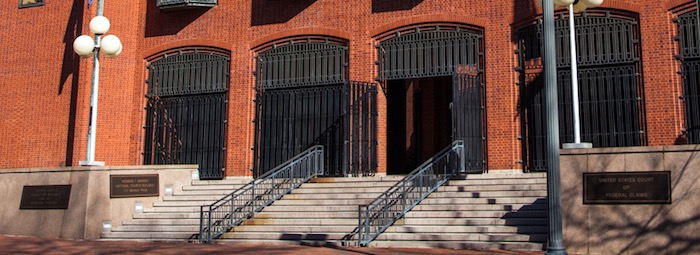“Given the developed record on the correlation between wire strength and material cost, we find that Everstar’s cost reduction argument is a fair extension of its previously asserted arguments, and the Board abused its discretion in refusing to consider it.” – CAFC
 Earlier this week, the U.S. Court of Appeals for the Federal Circuit (CAFC) vacated and remanded a decision by the Patent Trial and Appeal Board (PTAB) in a post grant review where the PTAB concluded that Everstar did not meet its burden to demonstrate the challenged claims were unpatentable as obvious because it failed to show a motivation to combine the asserted prior art. The CAFC found that the PTAB abused its discretion when it refused to consider whether cost reduction would have driven one skilled in the art to combine the asserted prior art.
Earlier this week, the U.S. Court of Appeals for the Federal Circuit (CAFC) vacated and remanded a decision by the Patent Trial and Appeal Board (PTAB) in a post grant review where the PTAB concluded that Everstar did not meet its burden to demonstrate the challenged claims were unpatentable as obvious because it failed to show a motivation to combine the asserted prior art. The CAFC found that the PTAB abused its discretion when it refused to consider whether cost reduction would have driven one skilled in the art to combine the asserted prior art.
History
Willis Electric (Willis) owns U.S. Patent No. 10,222,037 (‘037 Patent) for “Decorative lighting with reinforced wiring” which claimed its novelty is the use of internally reinforced wires in decorative net lights. The prior art cited by the ‘037 patent used other methods of reinforcing the wires through various means other than those claimed. The ‘037 patent claims a different design that supposedly reduces material costs, bulk, and weight without forfeiting strength.
In 2019, Everstar petitioned for a post grant review of all the claims of the ‘037 patent, alleging that the claims are unpatentable because they are obvious based on a combination of U.S. Patent No. 6,367,951 (Kumada) and U.S. Patent No. 8,692,120 (Debladis ’120). Everstar argued that a person of ordinary skill in the art (POSITA) would have been motivated to combine Kumada and Debladis ‘120 if the POSITA were looking for a way to increase the strength and durability of the lights because Kumada explains that absent any electrical wire within the ropes decreases the cost and renders the manufacturing more economical.
Willis contended that Debladis ‘120 was not analogous art to Kumada and the ‘037 patent because the stated goal of Kumada was to decrease cost while the benefit of Debladis was no change in the cost when increasing the strength of the wire. The PTAB issued its decision finding that Everstar was correct and combining the two prior arts would be obvious.
Willis filed a response to the PTABs finding arguing that “Debladis ’120 only recognizes a reduction in cost if there is excess copper in the wire that can be removed for signal transmission purposes” and Everstar did not argue that the amount of copper would be reduced in Kumada. Everstar in response argued that a POSITA would be motivated to incorporate the wire in Debladis ‘120 with Kumada in order to reduce cost and increase durability. Willis said the PTAB shouldn’t consider this new argument because it was not in Everstar’s initial reply brief.
The PTAB’s final written decision noted there were only two points of disagreement between the parties: “(1) whether Debladis ’120 is analogous art, and (2) whether a POSITA would have been motivated to combine Kumada with Debladis ’120.” The PTAB declined to consider cost reduction as motivation to combine the prior art because Everstar didn’t assert the theory in its petition. The PTAB instead focused its attention on whether a POSITA would have been motivated to improve the durability of the wire. The PTAB ultimately determined that Everstar didn’t meet its burden to show the motivation to combine the cited prior art.
Federal Circuit Analysis
The CAFC began by noting that it has jurisdiction to review the PTAB’s legal conclusions and its factual findings of substantial evidence. In its appeal, Everstar argued the PTAB abused its discretion when it didn’t consider cost reduction as a potential motivation for combining the prior art. The court found this argument persuasive and agreed. Citing to Intelligent Bio-Systems, Inc. v. Illumina Cambridge Ltd. (Fed Cir. 2016), the CAFC stated that in a post grant review petition, the petitioner must “identify ‘with particularity’ the ‘evidence that supports the grounds for the challenge to each claim.’” The petitioner is not allowed to assert an entirely new rationale in its post-institution reply. The PTAB may refuse to address any reply brief that crosses the line between responsive and new to allow the owner of the challenged patent a fair opportunity to respond.
The court determined that the PTAB should have considered the argument of cost reduction in its motivation to combine analysis because the record shows that increased strength of the wire and reduced material cost are intertwined benefits of the claimed invention. The ‘037 patent explains the drawbacks in the prior art’s method for increasing strength is an increase in cost. Everstar additionally noted in its petition that Kumada teaches an inverse relationship between cost and the quantity of material used. Willis in its response acknowledged this relationship when discussing the cited prior art. The CAFC found that the PTAB referenced this relationship when it reasoned that both of the cited prior art references discuss a desire to decrease the cost while increasing the strength of the wire.
The CAFC concluded:
Given the developed record on the correlation between wire strength and material cost, we find that Everstar’s cost reduction argument is a fair extension of its previously asserted arguments, and the Board abused its discretion in refusing to consider it.
The court noted that a petitioner is entitled to respond to arguments raised by the corresponding party in its preliminary response when the petitioner replies. Everstar’s cost reduction argument directly addressed the issues raised in Willis’s preliminary response and post-institution response. The CAFC determined there was no lingering uncertainty as to whether the cost reduction argument was new in view of the petition and that the record fully supported that the cost reduction analysis was a legitimate reply to arguments raised by both Willis and the PTAB.

![[IPWatchdog Logo]](https://ipwatchdog.com/wp-content/themes/IPWatchdog%20-%202023/assets/images/temp/logo-small@2x.png)

![[[Advertisement]]](https://ipwatchdog.com/wp-content/uploads/2023/01/2021-Patent-Practice-on-Demand-1.png)
![[Advertisement]](https://ipwatchdog.com/wp-content/uploads/2024/04/UnitedLex-May-2-2024-sidebar-700x500-1.jpg)
![[Advertisement]](https://ipwatchdog.com/wp-content/uploads/2024/04/Artificial-Intelligence-2024-REPLAY-sidebar-700x500-corrected.jpg)
![[Advertisement]](https://ipwatchdog.com/wp-content/uploads/2024/04/Patent-Litigation-Masters-2024-sidebar-700x500-1.jpg)

![[Advertisement]](https://ipwatchdog.com/wp-content/uploads/2021/12/WEBINAR-336-x-280-px.png)
![[Advertisement]](https://ipwatchdog.com/wp-content/uploads/2021/12/2021-Patent-Practice-on-Demand-recorded-Feb-2021-336-x-280.jpg)
![[Advertisement]](https://ipwatchdog.com/wp-content/uploads/2021/12/Ad-4-The-Invent-Patent-System™.png)






Join the Discussion
One comment so far.
Pro Say
April 17, 2022 03:02 pm“The only patent we can’t invalidate is one that . . . ha! ha!; just kidding — we can indeed invalidate any and all patents. The Grinch got nothing on us!”
— Your Friendly Neighborhood CAFC